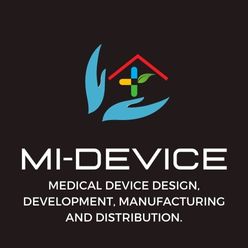If you want to improve your singing experience, then you need a MIDevice, which is a state-of-the-art device. It is a MIDI controller that can be linked to electronic instruments like synthesizers, drum machines, and sequencers for streamlined management and data exchange. The term "Musical Instrument Digital Interface" (or "MIDI") refers to a protocol that has been used for decades in the music business to manage digital communication between various electronic instruments and other devices.

To meet the requirements of as many musicians as possible, MIDevice is available in a wide range of forms, from keyboard controllers to drum pads and even guitar interfaces. Live music performance, sound design, and MIDI recording and playing are all simplified with this program. Due to its intuitive design and extensive feature set, MIDevice has quickly become a standard instrument for professional and amateur musicians alike.
MIDevice has evolved into a platform for artistic exploration, allowing artists to try out new sounds and techniques. MIDevice is a flexible and potent instrument that can help musicians of any skill level create more engaging and professional-sounding music.
MIDevice: The Medical Device for Improved Patient Outcomes
When it comes to diagnosing and treating medical problems, MIDevice has been a game-changer for doctors and hospitals. It's a non-invasive tool that helps doctors do their jobs more precisely, which ultimately benefits the patient.
Different kinds of MIDevice, such as endoscopes, catheters, and surgical instruments, are available to meet the requirements of various medical fields. It allows doctors to conduct everything from routine exams to complex surgeries using less invasive techniques, which in turn expedites healing and lessens the likelihood of complications.
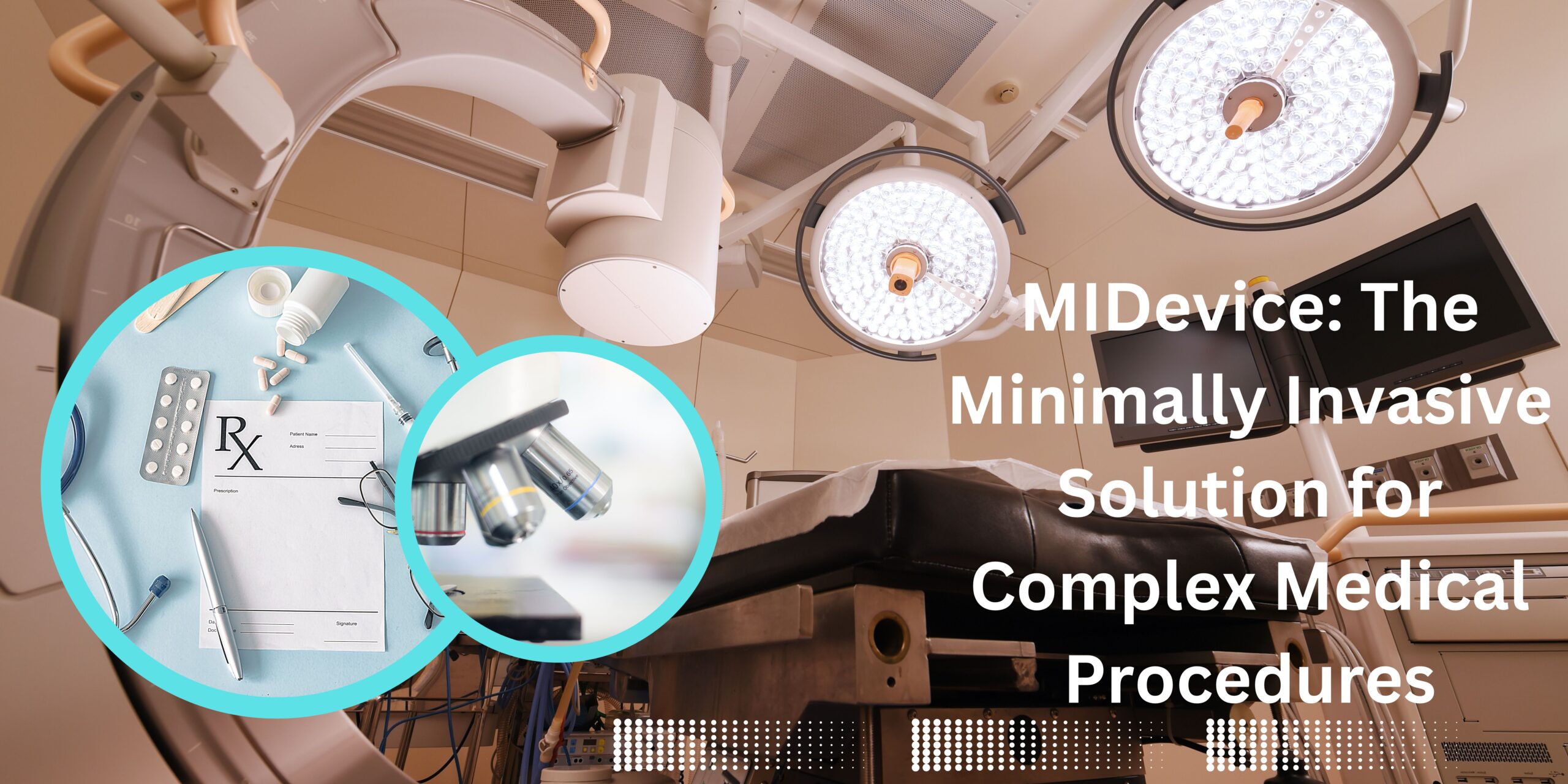
MIDevice's cutting-edge technology improves doctors' ability to see inside patients' bodies and conduct diagnostic procedures. By doing so, they can execute medical procedures with less room for error and complications.
Reduced patient trauma is a major upside to minimally invasive procedures, which are made possible by MIDevice. Fewer stitches and less discomfort are the results of smaller incisions used in these operations. As an added bonus, patients who are at a higher risk of complications from general anesthetic can benefit from minimally invasive procedures because they require less anesthesia.
For endoscopic procedures, the field of gastroenterology has found MIDevice to be especially fruitful. The esophagus, stomach, and intestines can all be inspected with an endoscope during an endoscopy treatment, which is considered minimally invasive. Physicians can see inside the body and take biopsies if required with the help of the endoscope, a thin, flexible tube equipped with a light and camera at its tip.
The use of endoscopy for the evaluation and management of digestive health issues is now common practice. Better patient outcomes are a direct consequence of the enhanced precision and accuracy that MIDevice affords doctors during these procedures. Patient comfort has been increased thanks to MIDevice, which enables doctors to perform endoscopy with less effort and pain.
It's no secret that MIDevice has changed the face of cardiology. Heart disorders like coronary artery disease and heart valve dysfunction can both be diagnosed and treated via catheterization. Catheterization involves the insertion of a thin, flexible tube into a blood artery and its subsequent navigation to the heart. As soon as the catheter is in position, a wide range of diagnostic and therapeutic options become available to the medical team.
Catheterization is now safer and more effective than ever thanks to MIDevice, which also allows doctors to execute the procedure with greater precision and accuracy. The cutting-edge technology of MIDevice improves doctors' visualization of the cardiovascular system, which in turn lowers the likelihood of complications and boosts patient results.
The use of MIDevice has also altered the face of surgical practices. Large cuts are necessary for conventional surgical procedures, which increases discomfort and lengthens the healing process. Many surgical procedures can now be done using minimally invasive techniques thanks to MIDevice, which means less pain and a quicker recovery for the patient. Additionally, improved patient outcomes have resulted from the use of MIDevice by lowering the likelihood of complications occurring during surgery.
MIDevice has not only found widespread use in clinical settings, but it has also emerged as an important resource in academic medicine. Using MIDevice's cutting-edge technology, scientists and medical students can learn about the human body and practice complicated procedures. Patient outcomes have improved thanks to the use of MIDevices, which have allowed for great strides to be made in medical study and education.
In the area of robotic surgery, MIDevice has also become an indispensable tool. Minimally invasive surgery performed by robotic limbs is called robotic surgery. Better patient outcomes have been achieved thanks to the incorporation of MIDevice into robotic surgery, which has increased the precision and accuracy of the process.
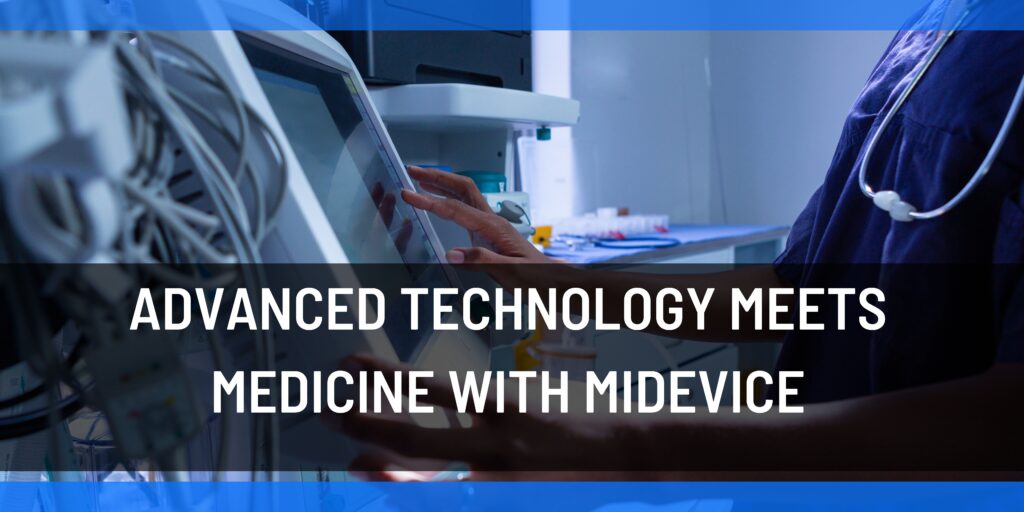
As a conclusion, MIDevice is a game-changing medicinal innovation. Because of its cutting-edge features and adaptability, it has become an indispensable instrument for medical practitioners, allowing them to give their patients higher-quality care and better results. Since MIDevice uses minimally invasive techniques, patients experience less pain and can recuperate from their surgeries much more quickly. Furthermore, MIDevice's cutting-edge technology improves the precision and accuracy of medical practitioners, thereby lowering the likelihood of mistakes and problems.
In the areas of gastroenterology, cardiology, and robotic surgery, MIDevice has proven especially useful, helping to increase process precision and thus improving patient outcomes. Further, major breakthroughs in healthcare have resulted from MIDevice being used in study and instruction.
The future of MIDevice appears bright as efforts are being made to enhance its capabilities and broaden its use. Improved patient outcomes and medical change brought on by MIDevice are to be expected as technology develops further.
In summation, MIDevice is a cutting-edge medical tool that has revolutionized the detection and treatment of a wide range of illnesses and injuries. Patient outcomes have improved thanks to its widespread use in medical operations thanks to its cutting-edge technology and adaptability. MIDevice has the ability to further revolutionize medicine and improve patient care with the help of ongoing research and development.
Create Your Dream Home with the Help of MIDevice Smart Home Technology!
Due to its capacity to transform homes into intelligent, effective spaces, MIDevice technology has been getting popularity in recent years. A variety of smart home products are available under the MIDevice brand, which aims to make daily living simpler and more convenient. The goal of this essay is to thoroughly explain MIDevice technology and its advantages.
MIDevice Technology: What is it?
A type of smart home technology known as MIDevices enables users to manage different devices throughout their homes from a unique application. The technology enables seamless integration and management by connecting devices through wireless transmission.
Lighting, security, heating, and entertainment are just a few of the many home-related products that MIDevice provides. Users can easily manage their homes from one place by using an unique MIDevice app to control all of these products.
The way we live and engage with our homes has been revolutionized by smart home technology. Smart speakers, lighting controls, surveillance cameras, and thermostats have all become more and more common in recent years. These gadgets are essential for contemporary homeowners because they provide ease, energy efficiency, and increased protection.
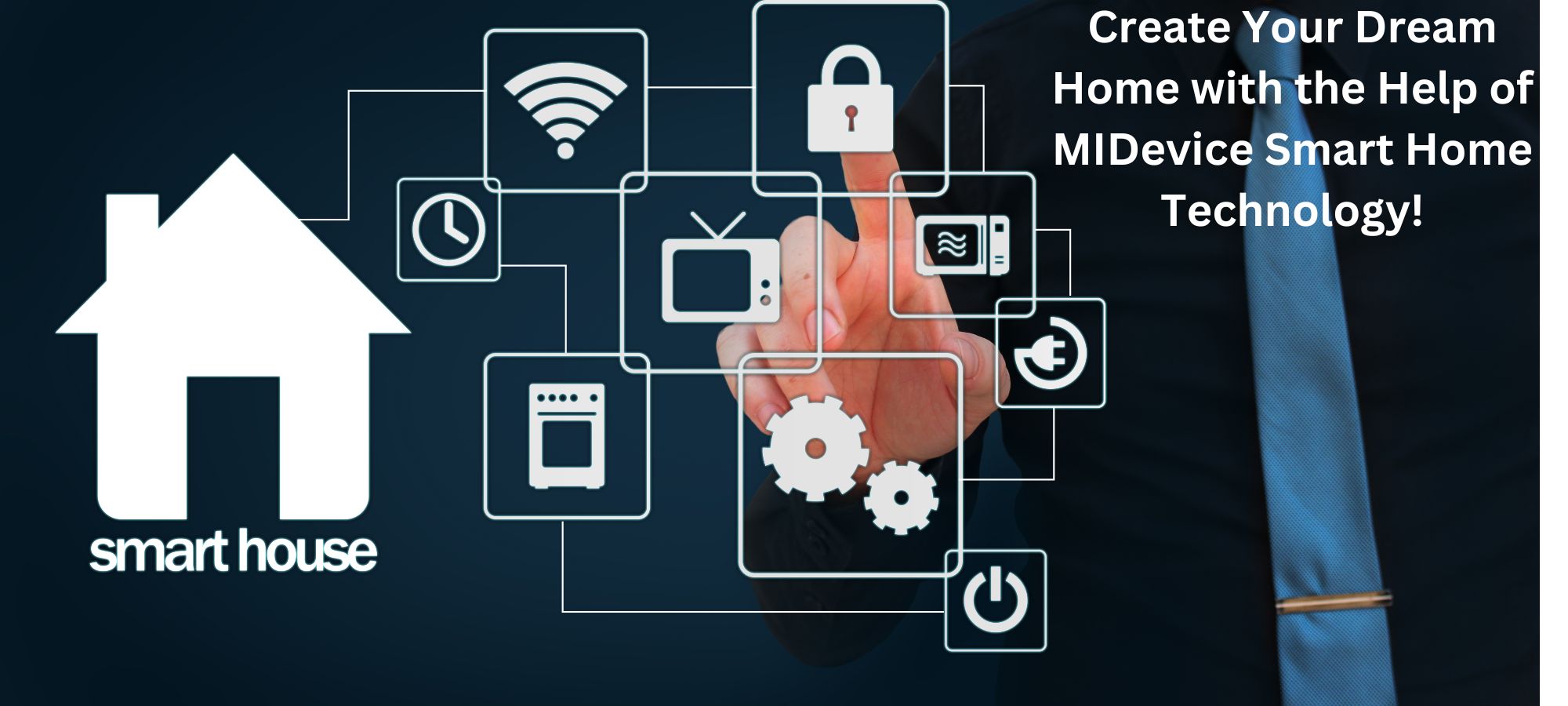
The business MIDevice, which provides a variety of smart home products that can be integrated into home improvement projects, is one at the forefront of this trend. Here are some methods you can use MIDevice smart home technology in your endeavor, whether you’re building a new house or remodeling an old one.
Lighting
For homeowners seeking to improve the ambiance of their homes while conserving energy, smart lighting control systems are a common option. A variety of smart lights, switches, and dimmers are available from MIDevice that can be managed through a smartphone software, voice controls, or a central hub. These devices offer a variety of customization choices, including color and brightness settings, and can be simply incorporated into your home’s current electrical system.
Cooling and heating
Heating and cooling systems are another place where MIDevice smart home technology shines. Smart thermostats, like the MIDevice T6 Pro Wi-Fi Thermostat, let homeowners establish schedules, control the temperature of their homes online, and get alerts when the temperature veers off-target. Your heating and cooling tastes can also be learned by these devices, which allows for energy savings and improved comfort.
Security
Cameras, doorbells, and other smart home protection gadgets are available from MIDevice. These gadgets offer improved protection features like two-way communication, motion detection, and live video streaming. You can check on the security of your home using the MIDevice app from anywhere, and you’ll get notifications if any suspicious behavior is found.
Entertainment
The entertainment system in your house can benefit from smart home technology as well. The Google Nest Mini and Amazon Echo Dot are just two of the smart speakers available from MIDevice that can be used to manage other smart devices, play music, and give voice assistants. These gadgets offer an immersive listening experience and are simple to incorporate into your home’s current audio setup. MIDevice technology advantages
The ability of MIDevice technology to automate processes and improve daily life is one of its primary advantages. For instance, users can set their thermostats to change to their desired temperature throughout the day or program their lighting systems to come on automatically when they get home.
Devices like smart locks, cameras, and motion sensors that provide round-the-clock tracking and alerts are just a few examples of how MIDevice technology can improve home security. Through the MIDevice app, users can virtually access these devices, giving them the ability to check in on their properties from anywhere in the world.
The energy economy of MIDevice technology is another advantage. Users can monitor their energy usage and make changes to reduce their carbon impact and save money on their utility bills with the help of smart home gadgets like smart thermostats and energy monitors.
Introduction to MIDevice Technology
Users must buy compatible devices and obtain the MIDevice app in order to use MIDevice technology. Users can use their smartphone or tablet to manage connected devices once the app is installed. Some gadgets might also work with speech assistants like Google Assistant or Amazon Alexa, enabling hands-free operation.
Users should verify compatibility before making purchases because not all devices are compatible with the MIDevice app. Some of MIDevice’s products are also eligible for expert installation services, which guarantee proper setup and implementation.
Conclusion
For those looking to make their homes smart and effective spaces, MIDevice technology provides a number of advantages. MIDevice technology can improve security, automate routine tasks, and encourage energy conservation. These improvements can make living easier and more sustainable. Customers can manage every aspect of their homes from the palm of their hands with the appropriate gadgets and the MIDevice app.
From Telemedicine to Telegarage: The Innovative Intersection of Medical and Garage Door Technologies
There are many ways to enhance the way we go about living our everyday lives thanks to the development of technology. The fields of telemedicine and garage door technology have both made major strides in recent years. Although at first look they may appear unrelated, there is a creative intersection between the two that has the potential to enhance home automation and security. In this piece, we’ll examine the development of telegarage as well as the advantages and drawbacks of fusing garage door and medical technologies.
Our homes are no exception to the increasingly connected globe. With a broad variety of devices and appliances that can be controlled directly via the internet, smart homes have gained popularity in recent years. However, new and exciting possibilities for home automation and security are presented by the integration of medical and garage door technologies. We can make our homes better and more productive by combining the two.
The Development of Telemedicine
Telemedicine is the distant provision of medical services made possible by technological advancements. Recent years have seen a rise in its popularity, with the worldwide pandemic hastening its uptake. Numerous advantages come with telemedicine, including improved accessibility to healthcare services for residents of remote locations, decreased healthcare expenses, and improved patient convenience. With improvements in remote monitoring, video conferencing, and telehealth devices, medical technology has been instrumental in allowing telemedicine.
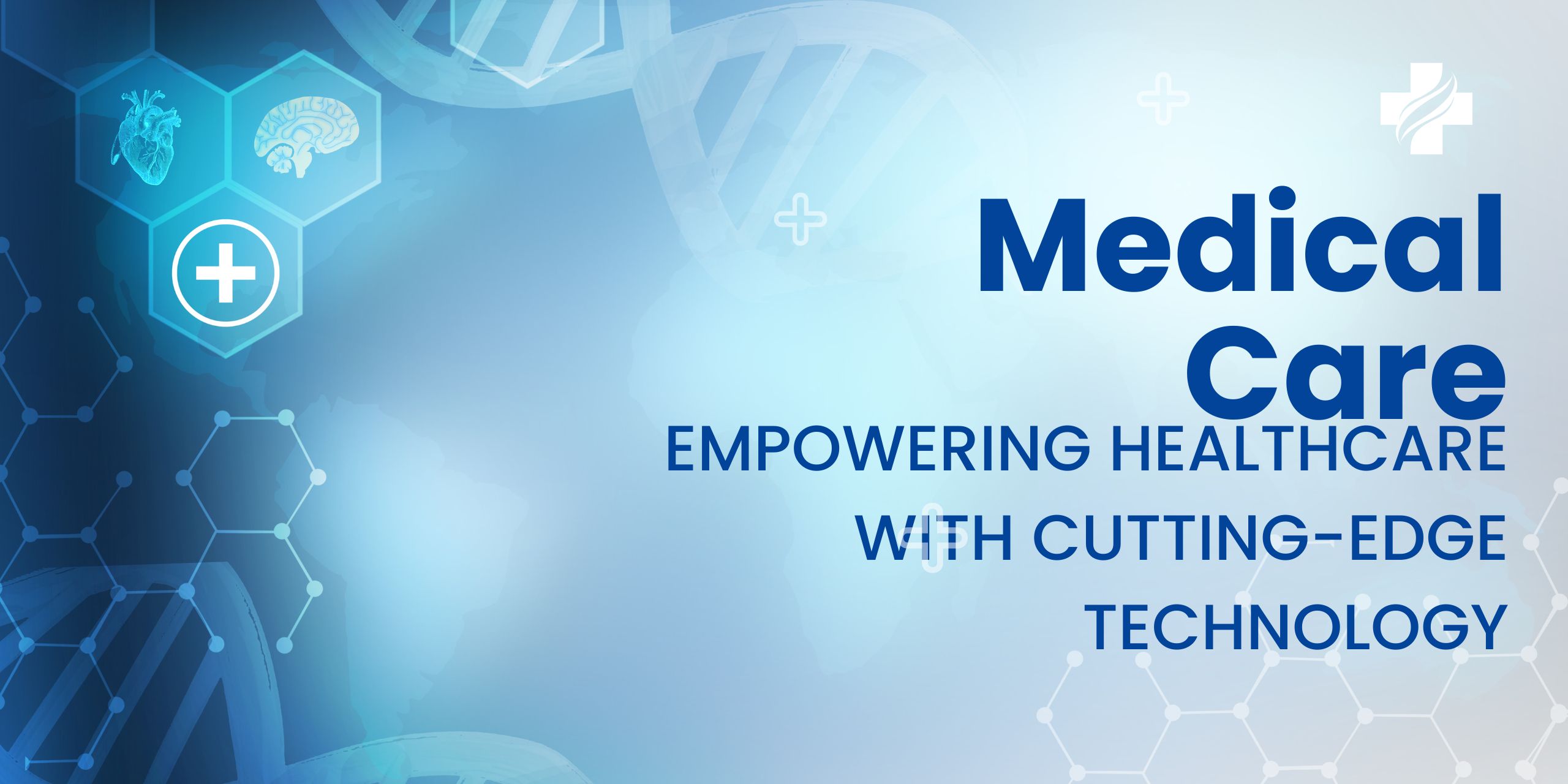
However, there are some difficulties with telemedicine. In addition to privacy issues, some patients might not have access to the required technology or internet connectivity.
The Development of Telegarage
By fusing garage door and medical technology, telegarage is a logical progression of telemedicine that boosts house automation and security. Telegarage makes it possible for homeowners to remotely watch and manage garage doors, which can increase convenience and accessibility. A further measure of security can be added by incorporating medical sensors in garage doors, which can offer real-time monitoring of dangers like carbon monoxide.
Maintenance on garage doors may also have advantages. Telegarage can identify problems before they become serious ones, enabling prompt repairs and lower maintenance costs. In order to keep garage doors in top shape, homeowners can also get alerts when maintenance is required.
Implementing telegarage, however, is not without difficulties and restrictions. As with any internet-connected device, security and privacy issues are a problem. In addition, some homeowners might find the expense of installing telegarage to be a barrier. Need an expert to install a garage door for you? Check out this garage door repair service.
Innovative Uses of Garage Door and Medical Technology
Numerous cutting-edge applications for house automation and security are made possible by the combination of medical and garage door technologies. To allow seamless control of garage doors, lights, and other devices, for instance, telegarage technology can be incorporated with smart home technology. Other dangers, like poor air quality and temperature, can be detected by medical devices that can be incorporated into garage doors.
For aging or disabled people who might have trouble opening their garage doors, telegarage can be helpful. They may be able to operate their garage doors remotely, increasing accessibility and freedom, by doing so without having to physically engage with them.
Challenges and Things to Think About
When implementing telegarage, there are issues and difficulties to take into account, just like with any new technology. Users’ data must be protected by suitable safeguards that take security and privacy concerns seriously. Additionally, some homeowners might find the expense of installing telegarage to be a deterrent, though costs are probably going to go down as technology develops and becomes more accessible.

The ethical ramifications of combining medicinal and garage door technology must also be taken into account. Similar to telemedicine, patient security and privacy must come first when using medical technology in telegarage.
The Future of Telemedicine and Healthcare
Technology
With numerous potential applications and advantages for both the healthcare and home automation sectors, the future of telegarage and medical technology integration is bright. To build a complete and interconnected home automation system, for instance, telegarage can be linked to other internet-of-things devices like smart thermostats and security systems.
Additionally, garage door openers can incorporate medical technology, making them able to watch a person’s vital signs if they have a chronic illness. This enables more proactive and individualized healthcare by enabling real-time tracking of heart rate, blood pressure, and other health indicators.
Aside from that, telegarage can be helpful in dire circumstances like medical emergencies or natural catastrophes. Remote garage door entry enables emergency personnel to enter a house with ease and safety.
In conclusion, the combination of garage door and medical technology represents a fresh and cutting-edge method of home automation and protection. Numerous advantages, such as enhanced accessibility, comfort, and safety, are possible with telegarage. However, it is crucial to take into account the difficulties and limitations of telegarage implementation, such as private and security issues. With numerous potential applications and advantages for both the healthcare and home automation sectors, the future of telegarage and medical technology integration is exciting. We can anticipate seeing even more creative solutions that enhance the way we go about living our everyday lives as these technologies continue to develop and improve.
Innovative Medical Device Technology Helps Homeowners Improve Health and Home
Technology in medical devices has advanced greatly in recent years, and its use is no longer restricted to institutional settings like hospitals and clinics. Homeowners’ health and safety can be greatly enhanced by the use of a variety of medical equipment. Medical device technology has the ability to revolutionize how we think about and handle home improvement and individual health, from air purifiers to wearable fitness trackers.
This piece will discuss some of the cutting-edge medical devices available to homeowners today. New developments in home medical gadget technology will also be discussed, along with their potential impact on the future of people’s health and wellbeing in their own homes.
Innovation in Domestic Health Care through Medical Devices
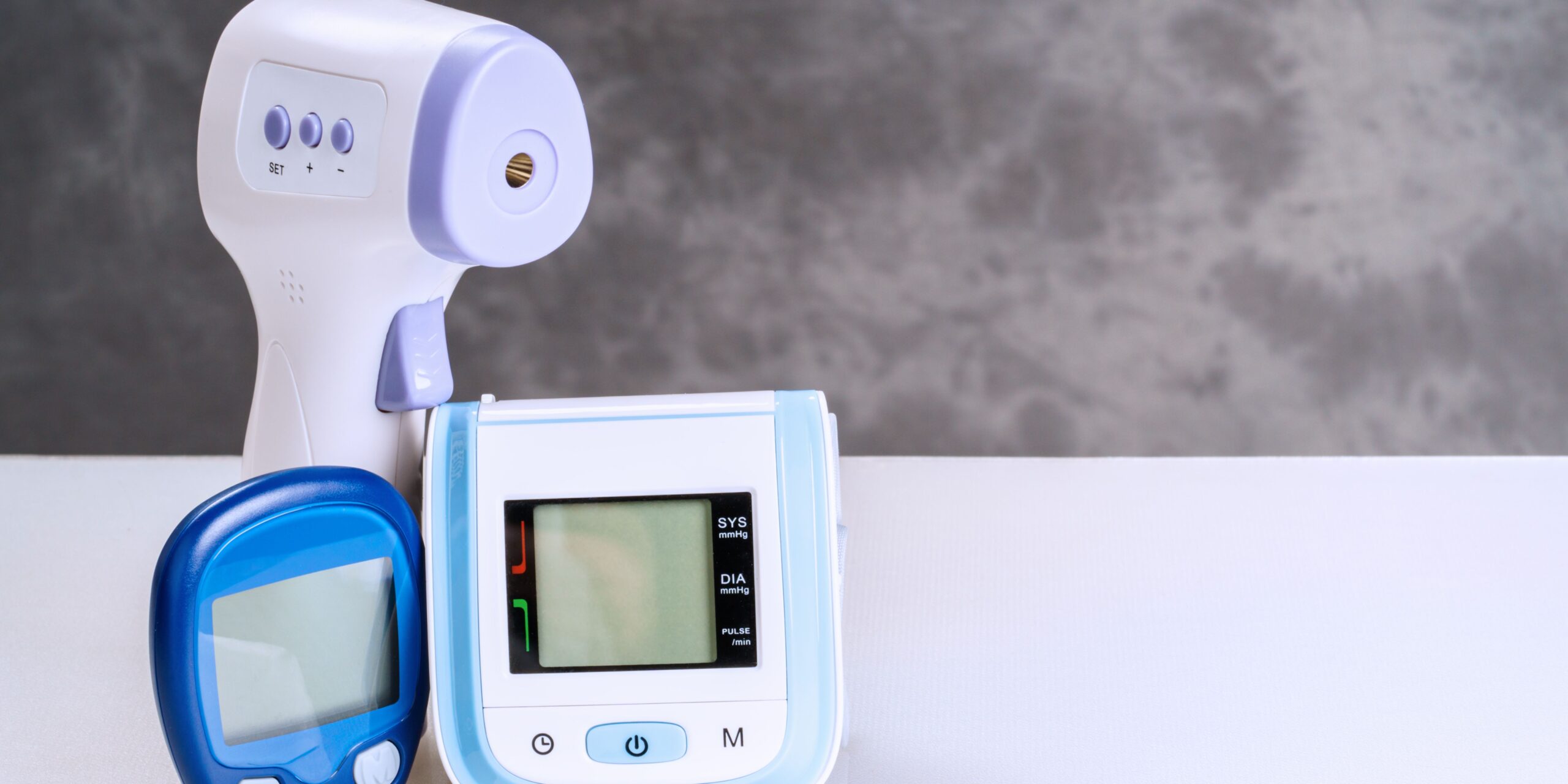
The potential to make our homes healthier and safer is one of the greatest achievements of medical device technology. Anyone concerned about the purity of the air they breathe at home would benefit greatly from purchasing an air purifier. Pollutants, allergens, and other particulates that can aggravate respiratory and other health problems are effectively filtered out by these devices. Furthermore, many modern air purifiers feature intelligent sensors that can sense changes in air quality and automatically adjust the purification settings.
Filtration systems for drinking water are another type of medical equipment that has the potential to make our homes safer and healthier for our families. These devices filter out disease-causing substances like lead and chlorine from our drinking water. In addition to improving water quality, many modern water filtering systems are also created to reduce a household’s overall energy consumption.
Technology in the form of medical devices allows us to do more than just enhance our living conditions; it also empowers us to take charge of our own health. Homeowners who want to keep busy and keep tabs on their progress are a growing market for wearable fitness trackers like the Fitbit. These devices can record the number of steps taken, the number of calories expended, and other health metrics, giving the user important information about their health and fitness.
Personal health monitoring can also be accomplished with the help of medical gadget technology, such as blood glucose monitors. Having the ability to monitor one’s blood sugar levels at home with one of these gadgets is a huge step toward better diabetes management. In addition, many modern blood glucose monitors feature Bluetooth connectivity, allowing users to wirelessly transmit their data to a companion mobile software for convenient monitoring and analysis.
Home Healthcare Technology: The Wave of the Future
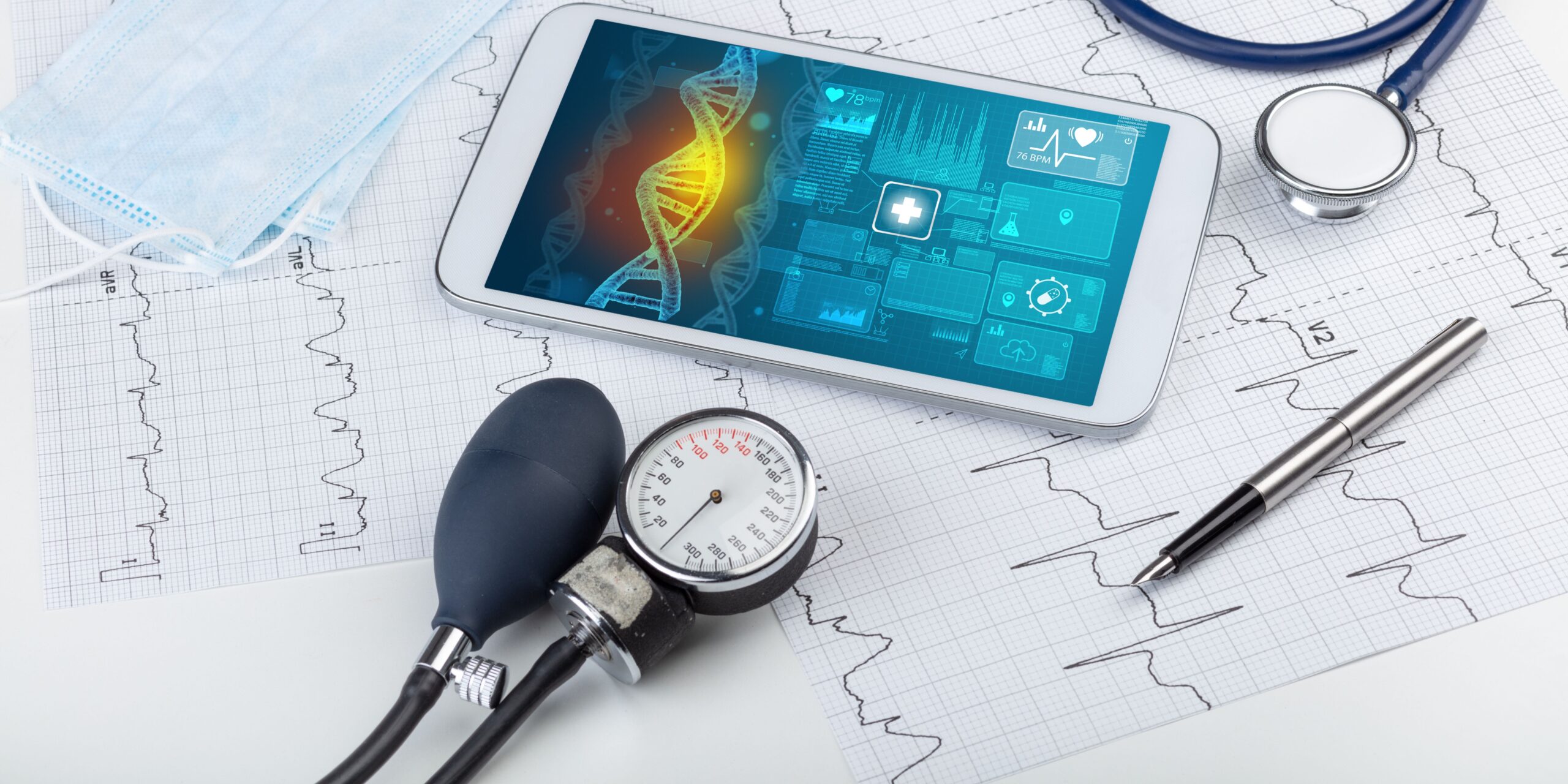
More cutting-edge at-home medical equipment is bound to appear as technology develops. For instance, smart home systems are on the rise because they simplify the management of multiple house functions, such as climate control, lighting, and security, with a single interface. Homeowners can keep tabs on their health and well-being in addition to their property with the help of these systems, which can be connected to various medical equipment.
Another developing area of home healthcare technology is telehealth services. These services facilitate distant doctor-patient consultations via video conferencing and other digital means. People in outlying or rural areas, where medical treatment options may be more limited, may benefit greatly from this.
Technology in medical devices could significantly alter how we think about and care for our health and living conditions at home. We can enhance our health and well-being and protect our houses and families from harm by using cutting-edge medical technology in our everyday lives. Homeowners’ health and happiness will continue to improve thanks to exciting new developments in medical device technology that are sure to come about as technology continues to progress. Thinking about how the latest innovations in medical technology can better your home and your health is a worthwhile endeavor for any homeowner.
The Role of Hospital Garage Doors in Disaster Preparedness
Hospitals must be ready to act promptly and effectively in the event of a disaster in order to protect their patients, employees, and the general public. The efficient operation of garage doors is a crucial aspect of hospital catastrophe preparation. We’ll look at the crucial role that hospital garage doors play in disaster readiness in this article, as well as the precautions that hospitals may take to make sure their garage doors are operating at peak efficiency.
Critical Elements of Disaster Preparedness: Hospital Garage Doors
Emergency personnel and vehicles need rapid and easy access to hospitals after a crisis. Hospital garage doors are essential in making this access possible. Ambulances, fire trucks, and other emergency vehicles can enter garage doors, allowing them to carry patients and medical supplies to and from the hospital. Additionally, garage doors make it possible to move patients quickly and safely between different parts of the hospital, such as from the emergency room to surgery or other areas.

Hospital garage doors are essential for access as well as for safeguarding personnel, patients, and medical equipment in the event of an emergency. High winds, flooding, and other natural catastrophes must not damage hospital garage doors. Patients may become stranded, medical equipment may be lost or destroyed, and emergency response operations may be slowed down if garage doors malfunction during a crisis.
Considerations for Security and Safety
Hospitals must take safety and security precautions in addition to making sure that garage doors work during disasters. Safety measures on garage doors are essential for mitigating damage and danger during emergencies. In order to prevent the door from closing if an object or person is spotted in the doorway, hospitals should make sure that their garage doors include safety sensors. Additionally, hospitals must make sure that their garage doors include emergency release mechanisms so that they may be opened manually in the event of a power loss or other disruption.
To safeguard patients and medical supplies in the event of a disaster, hospitals must also think about security measures. Garage doors should include security cameras and alarms and be able to withstand attempts at forced entrance. The controls for the garage door should only be accessible by authorized staff, thus hospitals should have policies in place to ensure this.
Upkeep and Instruction
The best performance of garage doors during emergencies depends on routine maintenance and testing. Hospitals should set up regular maintenance plans and make sure that every part of the garage door is regularly inspected and tested by professional garage door repairmen. This include inspecting the door springs, cables, and rollers as well as lubricating moving components, testing safety sensors, and testing emergency release mechanisms.
The training of hospital employees in proper garage door operating and maintenance procedures should be a priority. In the event of a power loss or other disruption, staff members should be familiar with the emergency release mechanisms and be able to operate the garage doors manually. Additionally, staff members need to receive training on garage door safety practices as well as how to recognize and report any problems with the garage doors.
Disaster Preparedness Plans Should Include Maintenance and Training for Garage Doors

Hospitals’ disaster preparedness strategies should include garage door maintenance and training. This entails creating routine maintenance plans, carrying out frequent safety drills involving garage doors, and giving personnel continual training in garage door operation and maintenance.
Hospitals ought to think about spending money on automated garage door systems that provide monitoring and remote access. Hospitals can have better control over their garage doors and can react to problems more rapidly thanks to automated technology. Additionally, automated solutions can give hospitals more access control flexibility and contribute to increased security in general.
Perhaps the last item that springs to mind when considering hospital catastrophe readiness are garage doors. However, as we’ve seen in this article, garage doors are essential to making sure that hospitals can react as swiftly and effectively as possible in times of emergency. To safeguard patients, employees, and medical equipment during emergencies, hospitals must make sure their garage doors are operational, secure, and safe. Garage doors need to be maintained and tested frequently, and staff members need to receive training. Hospitals can be more ready to handle catastrophes and safeguard the safety of their patients and employees by including garage door maintenance and training in their disaster preparedness plans.
Medical Integration of Music and Medicine: The Creative Applications of MIDevice in Robotic Surgery
In the world of modern medical technology, advancements continue to push the boundaries of what is possible. One such innovation that is making waves in the field of robotic surgery is the integration of music and medicine through the revolutionary MIDevice.
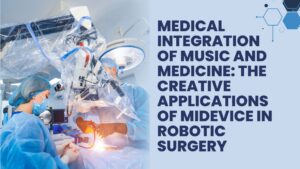
This state-of-the-art technology is not only transforming the way surgeons perform procedures but also creating a harmonious environment that enhances patient outcomes. In this post, we’ll delve into the creative applications of MIDevice in robotic surgery, exploring the fascinating intersection of music and medicine.
The Symphony of Medicine: How MIDevice Enhances Surgical Precision
In the realm of robotic surgery, precision is key. Every movement and action of the surgeon’s hand is crucial for successful outcomes. The MIDevice takes precision to a whole new level by integrating music into the surgical process. Surgeons wear special gloves equipped with sensors that convert their hand movements into musical notes.
This unique feedback system allows surgeons to fine-tune their actions, ensuring precise and accurate maneuvers during surgery. The musical element adds a creative touch to the surgical process, turning it into a symphony of precision.
Moreover, the integration of music offers a multi-sensory experience for surgeons, enhancing their spatial awareness and dexterity. By associating specific movements with particular musical notes or rhythms, the surgeon’s mind and body synchronize, enabling a heightened sense of control and precision.
This fusion of music and surgical precision not only improves the technical aspects of the procedure but also engages the surgeon’s artistic sensibility, allowing for a more intuitive and expressive approach to robotic surgery.
The Rhythm of Efficiency: Streamlining Surgical Workflow with MIDevice
Efficiency is vital in the fast-paced world of surgery. MIDevice brings a new rhythm to the operating room by streamlining the surgical workflow. By synchronizing the surgeon’s movements with musical cues, the device helps improve and maintain a steady pace throughout the procedure.
Surgeons can anticipate the next steps based on the musical prompts, ensuring a smooth and efficient surgical process. The integration of music not only enhances efficiency but also adds an element of enjoyment and creativity to the surgical team’s experience.
Furthermore, the rhythmic synchronization between the surgeon and the MIDevice fosters a sense of flow during the procedure. Flow refers to a state of deep focus and immersion in an activity, where one’s skills and concentration are perfectly aligned.
The musical cues provided by MIDevice guide the surgeon’s movements, helping them enter a flow state and perform at their peak. This flow state leads to heightened productivity, improved decision-making, and a seamless surgical experience, benefiting both the surgeon and the patient.
Melodies of Healing: The Therapeutic Benefits of
Music has long been recognized for its therapeutic effects, and its integration into robotic surgery through MIDevice opens up new possibilities for patient healing. Research has shown that music can reduce anxiety, alleviate pain, and enhance overall well-being.
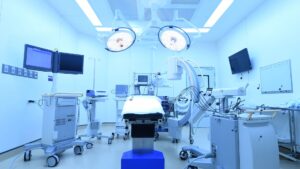
By incorporating carefully curated playlists during surgery, MIDevice creates a calming and comforting atmosphere for patients. The melodies of healing help patients relax and reduce stress, contributing to a positive surgical experience and potentially aiding in the recovery process.
Furthermore, the therapeutic benefits of music extend beyond the patient’s experience in the operating room. Studies have demonstrated that listening to music before and after surgery can have a positive impact on pain management, reduce the need for pain medication, and accelerate recovery.
By integrating music into the robotic surgery process, MIDevice not only enhances the surgical experience but also supports the holistic well-being of patients, promoting a faster and smoother recovery journey.
Harmonizing the Surgical Team: Fostering Medical Collaboration and Communication
Successful surgical outcomes depend not only on the skills of the surgeon but also on effective teamwork and communication. MIDevice plays a role in harmonizing the surgical team by promoting collaboration and communication. The musical feedback system serves as a shared language that enhances communication between team members.
Surgeons, nurses, and technicians can easily understand each other’s actions and intentions, leading to improved coordination and a seamless surgical experience. The shared musical language fosters a sense of unity and teamwork among the surgical team, ultimately benefiting patient care.
Moreover, the integration of music within the surgical team promotes a positive and supportive work environment. Music has the power to uplift moods, enhance motivation, and foster a sense of camaraderie. The shared experience of creating music together through the movements and actions in the operating room strengthens the bonds between team members, fostering a collaborative and harmonious atmosphere.
This collaborative spirit translates into improved patient care, as a united and cohesive team works seamlessly to achieve the best possible surgical outcomes.
Conclusion
The integration of music and medicine through MIDevice in robotic surgery represents a remarkable fusion of art and science. From enhancing precision and efficiency to providing therapeutic benefits and fostering teamwork, MIDevice is revolutionizing the field of surgery.
The creative applications of this innovative technology open up new possibilities for surgeons and patients alike. As music harmonizes with medicine, the future of robotic surgery becomes an inspiring symphony of healing and progress.
